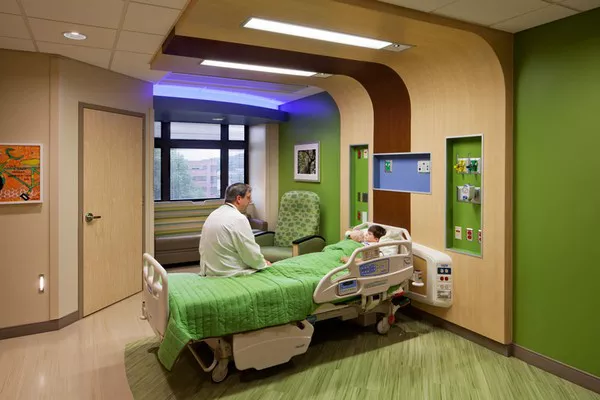End Stage Renal Disease (ESRD), also known as end stage kidney failure, marks the final phase of chronic kidney disease (CKD). At this stage, the kidneys have lost nearly all of their function, leaving individuals in need of life-sustaining treatments such as dialysis or a kidney transplant. Understanding ESRD involves grasping its definition, causes, symptoms, treatment options, and the impact it has on one’s life.
Definition of ESRD
ESRD is the advanced stage of CKD, characterized by a significant decline in kidney function, with an estimated glomerular filtration rate (eGFR) of less than 15 milliliters per minute per 1.73 m². Unlike earlier stages of CKD, where kidney damage may be present but still manageable, ESRD indicates that the kidneys are no longer able to function well enough to sustain life on their own.
Causes and Risk Factors
Several factors can contribute to the development of ESRD, including:
Diabetes: Diabetes is one of the leading causes of ESRD. High blood sugar levels over time can damage the blood vessels in the kidneys, leading to kidney failure.
Hypertension (High Blood Pressure): Chronic high blood pressure can strain the kidneys, causing damage to the blood vessels and filtering units of the kidneys.
Glomerulonephritis: This condition involves inflammation of the glomeruli, the tiny structures within the kidneys responsible for filtering waste and excess fluids from the blood.
Other less common causes include polycystic kidney disease, autoimmune diseases, genetic disorders, and prolonged obstruction of the urinary tract.
Symptoms
The symptoms of ESRD can vary from person to person but may include:
Fatigue: Due to the buildup of toxins and waste products in the blood, individuals with ESRD often experience extreme fatigue and weakness.
Swelling (Edema): Kidney failure can lead to fluid retention, causing swelling in the legs, ankles, feet, and sometimes the face.
Loss of Appetite: A decline in kidney function can result in a metallic taste in the mouth, nausea, and a decreased desire to eat.
Changes in Urination: Individuals may experience changes in the frequency and volume of urine output, including frequent urination, foamy urine, or blood in the urine.
As kidney function declines further, symptoms may worsen, leading to complications such as electrolyte imbalances, anemia, bone disease, and cardiovascular issues.
Treatment Options
Managing ESRD typically involves one or a combination of the following treatment options:
Dialysis: Dialysis serves as an artificial replacement for lost kidney function, removing waste products and excess fluids from the blood. There are two main types of dialysis:
Hemodialysis: This process involves filtering the blood through a machine outside the body, typically done at a dialysis center three times a week.
Peritoneal Dialysis: In this method, the peritoneum lining the abdominal cavity acts as a natural filter. Dialysis fluid is introduced into the abdomen through a catheter, allowing waste products to pass from the blood into the fluid.
Kidney Transplant: A kidney transplant offers the best chance for a return to a near-normal lifestyle. A healthy kidney from a living or deceased donor is surgically implanted into the recipient’s body, replacing the failed kidneys. While transplantation is often considered the optimal treatment for ESRD, it requires careful matching, extensive evaluation, and lifelong immunosuppressive medications to prevent rejection.
Palliative Care: Palliative care focuses on improving the quality of life for individuals with ESRD by managing symptoms, providing emotional support, and addressing psychosocial needs. It can be integrated alongside curative treatments to enhance overall well-being and comfort.
Life with ESRD
Living with ESRD necessitates significant adjustments to daily life, including:
Lifestyle Changes: Following a kidney-friendly diet low in sodium, potassium, phosphorus, and protein is crucial for managing ESRD. Fluid intake may need to be restricted to prevent fluid overload and swelling. Medication adherence is also essential to control blood pressure, manage symptoms, and prevent complications.
Emotional and Social Impact: Coping with the physical limitations and emotional stressors of ESRD can be challenging. Support groups, counseling services, and online forums provide opportunities for individuals and their families to connect with others facing similar challenges and share experiences.
Financial Considerations: ESRD treatment can place a significant financial burden on individuals and their families, particularly in regions with limited access to healthcare services or insurance coverage. However, financial assistance programs, government subsidies, and nonprofit organizations may offer support for medication costs, dialysis treatments, and transplant-related expenses.
Conclusion
While the prognosis for individuals with ESRD is serious, advancements in medical technology and treatment modalities have improved outcomes and extended life expectancy. With proper management and support, many individuals with ESRD lead fulfilling lives, pursuing their passions, and contributing to their communities.
Empowerment and hope play vital roles in the journey of living with ESRD. Patient advocacy organizations, educational resources, and success stories of resilience and perseverance inspire individuals to take an active role in their care, advocate for their needs, and embrace life to the fullest despite the challenges of kidney failure. By fostering a supportive environment and promoting holistic well-being, the ESRD community can thrive and find strength in solidarity.
FAQs
How long can you live with end stage kidney failure?
With end-stage kidney failure, survival rates vary depending on factors such as overall health, age, and access to treatment. On average, without dialysis or a kidney transplant, individuals may survive for a few weeks to a few months.
How close is death when kidneys shut down?
When kidneys shut down completely, death can occur within days to weeks without intervention such as dialysis or a kidney transplant. However, this timeline can vary based on individual health factors and the presence of comorbid conditions.
Is end stage renal failure painful?
End-stage renal failure itself may not necessarily be painful, but individuals may experience discomfort from symptoms such as fatigue, nausea, itching, and muscle cramps. Pain management is often part of the comprehensive care provided to those with end-stage renal failure.
Related topics:
- Understanding the Impact of Stroke on the Body
- Understanding Heat Stroke: Symptoms, Duration, Recovery & Prevention
- Peripheral Neuropathy: Causes, Symptoms & Treatment


